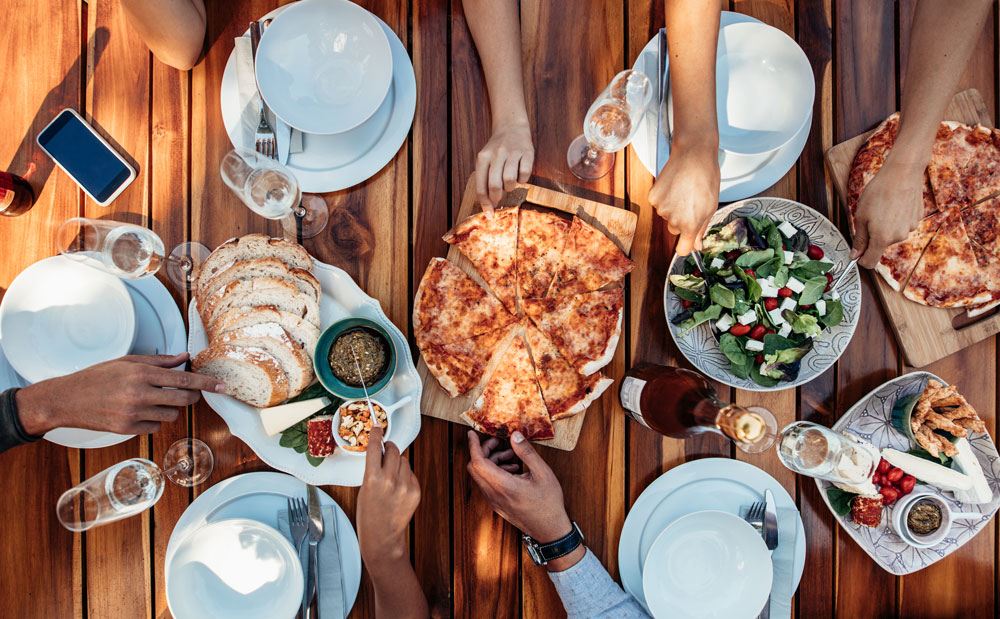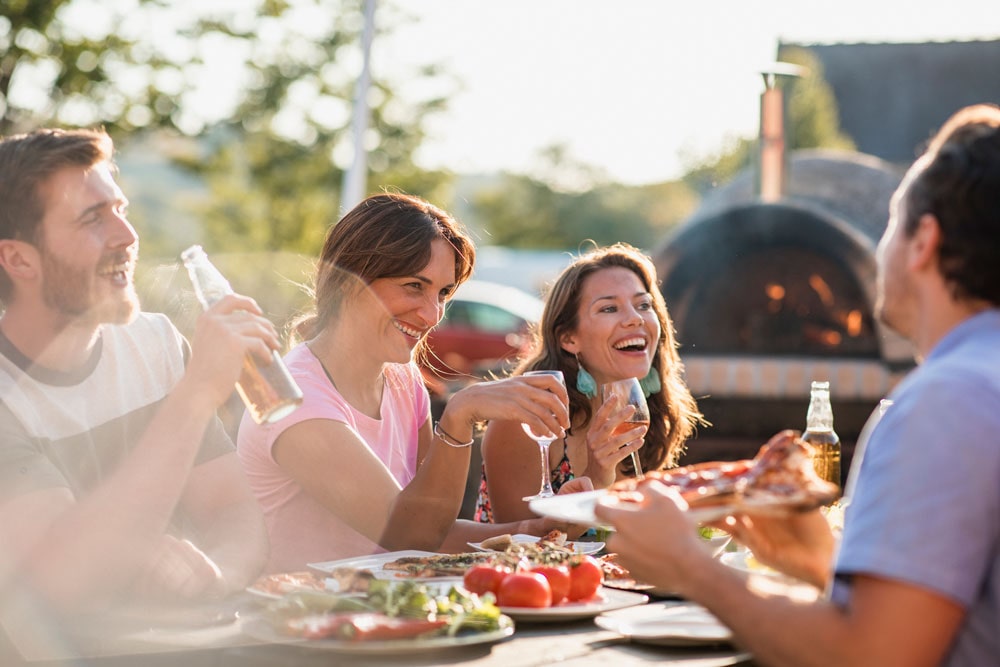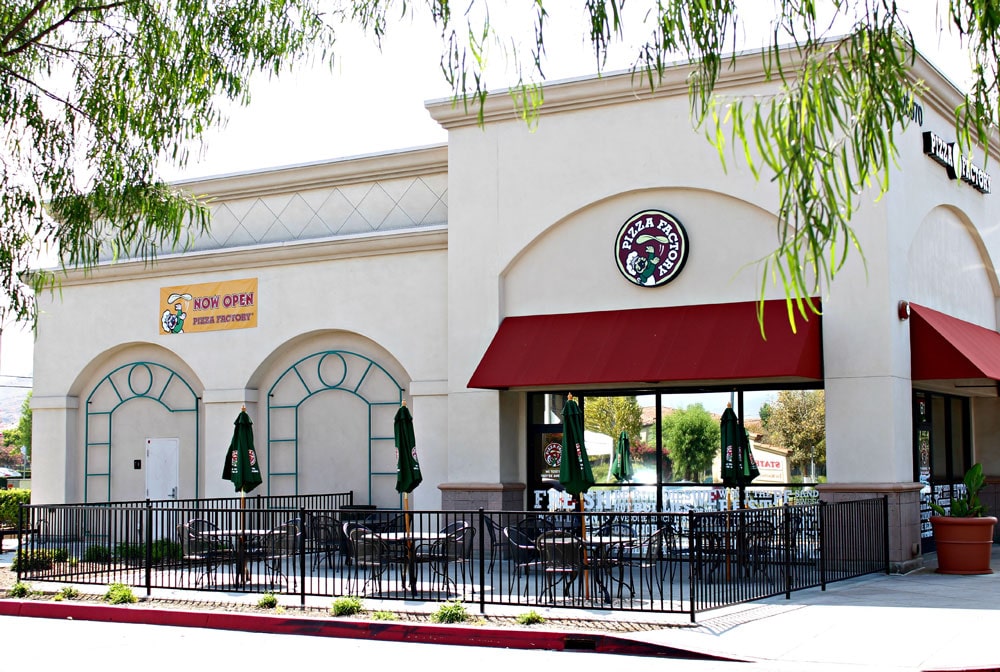By Tracy Morin
As local governments scrambled to help rescue COVID-affected restaurants during 2020, outdoor dining setups suddenly became a necessity. After all, with indoor dining capacity greatly reduced (or forbidden altogether), tables and chairs spilled out onto sidewalks, patios, streets and parking lots wherever possible.
And the focus on outdoor dining looks like it’ll be sticking around for at least part of 2021. Luckily, warmer weather is on the way—and we asked industry experts for their top tips to help you prepare. Read on to find out how you can get your operation alfresco-ready for springtime and beyond.
Related: How to improve your pizzeria’s outdoor dining experience during the pandemic
1) Stay on-brand.
With the push for increased outdoor dining space over the last year, landlords and operators have gotten creative. In some cases, restaurants’ outdoor spaces are a short distance away or carved into a parking lot. Therefore, Mark Moeller, president of The Recipe of Success, a national restaurant consulting firm in Westport, Connecticut, believes that a restaurant’s brand should be carried through its entire layout, including outdoors. “The look, feel, colors, chairs and tables outside should all reflect the current design inside—and this is especially important if the outdoor dining area isn’t adjacent to the restaurant,” he says.
2) Polish your image.
Mary Jane Riva, CEO of Pizza Factory, based in Oakhurst, California, with more than 100 locations, emphasizes that an inviting atmosphere is a must for outdoor dining, so staying on top of your team to monitor for cleanliness and sanitizing is important. “No one wants to sit in an area that looks unattended to,” Riva says. “Lighting is important and certainly can be fun—and not very expensive. But less is more: You want to provide an atmosphere but not take up all of your real estate with decor.”
Ultimately, Moeller says, outdoor dining spaces should not look like an afterthought and will vary according to use. “Conscious thought needs to go into whether the space will be an extension of the dining room, with servers, or if it will be used solely by takeout patrons,” he notes. “This will drive the specific needs of the design. Seating should be comfortable, tables level, heaters placed where appropriate, and lighting positioned to provide both ambience and security.” You can also consider installing an exterior security camera for safety.

3) Powwow with the powers that be.
With spring right around the corner, Tim Spiegelglass, owner of St. Louis-based Spiegelglass Construction Company, stresses that owners should start conversations now with their landlord and/or city officials to understand what creative outdoor dining options might look like. “We’re seeing some cities allow outdoor seating on the sidewalks, streets and/or parking lots due to the pandemic,” he says. “Reach out to your city to understand the regulations that are in place.”
You can also inquire about tenant improvement (TI), in which landlords and restaurant owners work together so that both parties benefit. “TI might include adding an overhang on an existing outdoor patio to increase the number of meals that can be served outside,” Spiegelglass explains. “It might also include expanding or renovating the patio area, adding a pickup window, and/or adding dedicated parking spots for curbside pickups.”
“Private dining pods and bubble pods can accommodate those who prefer additional privacy or protection from the elements and can help make outdoor dining more efficient and comfortable.”
— Eugenia Lebedynska, McDonald Paper & Restaurant Supplies
4) Plan ahead for intelligent design.
If you’re creating a new space, Spiegelglass recommends reaching out to your architect and general contractor to think through what an efficient and effective outdoor space might look like for you. “As you’re designing your space, think about the flow of getting food and drinks from the kitchen to your guests, limiting the number of steps taken, and utilizing one-way pathways if possible,” he advises. “You’ll need to take spacing requirements into consideration for seating, of course, keeping in mind that those could change as the pandemic evolves.”
Related: 8 ways to boost your pizzeria sales in the spring
Spiegelglass stresses that an owner should get his general contractor (GC) on board early to get the permitting process started and determine costs and timing. “Your GC can help you figure out what’s feasible for your space—everything from MEP (mechanical/electrical/plumbing) to utilizing the right materials for weather, like nonslip concrete for your patio,” he says. “Also consider building openness into your outdoor space, so instead of a closed-in four-season patio, consider a pergola or roof structure for coverage while leaving the space open, per city requirements. Most cities are requiring a certain percentage of open air on the sides to allow for circulation.”
5) Establish privacy.
Eugenia Lebedynska, CPO of McDonald Paper & Restaurant Supplies in Brooklyn, New York, recommends privacy-friendly layouts and furniture when setting up your outdoor dining area. “Use fences or dividers, string lights and planters to make your outdoor space as inviting as possible,” she suggests. “If you don’t have a permanent patio, you can also use dining pods; some are easy to install, decorate and maintain. Moreover, private dining pods and bubble pods can accommodate those who prefer additional privacy or protection from the elements and can help make outdoor dining more efficient and comfortable.”

“As you’re designing your space, think about the flow of getting food and drinks from the kitchen to your guests, limiting the number of steps taken, and utilizing one-way pathways if possible.”
— Tim Spiegelglass, Spiegelglass Construction Company
6) Maximize your space.
Spiegelglass notes that restaurant owners may want to add Plexiglas dividers, taller booths, and/or modular furniture to allow for additional seats and flexibility outdoors. “Even though you’re serving outdoors, you can still use sneeze guards,” Lebedynska adds. “Sneeze guards are excellent table dividers and unobtrusively enhance safety. Best of all, with protective guards in place, you can safely seat more customers outside.” Finally, she advises, use outside heaters if permitted, since chilly weather could deter some guests in the earlier-spring months.
7) Think functionality (and safety).
In pandemic times, consider upgrading your protocols and setups. For example, Moeller notes that small additions can help optimize functionality—think a server/busser station equipped with bus tubs, trash bins with swivel lids, sanitizer, and a way to store cleaning cloths. Meanwhile, single-serve items should not be stored in any part of the outdoor dining space unless it’s continuously staffed.
“Guests should not have the ability to touch something that may be provided to another guest; cross-contamination is a real concern in terms of transmission of bacteria,” Moeller stresses. “This has always been the case in terms of food safety, but there was minimal focus on single-serve items in public spaces until the pandemic hit.”
8) Ensure COVID compliance.
Other key points to keep in mind in terms of COVID compliance, according to Moeller: proper spacing between tables/chairs; disinfecting first thing in the morning (prior to first service) and again between lunch and dinner meal periods; sanitizing tables and chairs after every use; and cleaning/maintenance of the area, including seating, flooring, trash cans and server/busser stations. Many states also have requirements that tables must be covered (under a tent or umbrella, for example).
Meanwhile, Riva suggests tapping QR codes so that customers can download your menu. “And, if you have online ordering, tie it into that for ordering so you know who ordered, where they are sitting and their name, without too much interaction,” Riva adds. “Spacing is important as well. Make sure chairs are sanitized, especially if they have arms.” Finally, make sure your outdoor space offers proper ventilation to keep both service staff and customers as safe as possible.
Staying Safe Outside
You’ve likely heard that outdoor dining is safer during the COVID-19 pandemic. That’s because the virus mainly spreads through the air, and better-ventilated spaces help dissipate virus particles, according to Janilyn Hutchings, a certified food safety professional at StateFoodSafety in Orem, Utah. To add additional layers of safety, she shares her top tips for outdoor dining:
Don’t cut off airflow. If you plan to install a removable roof or tent to protect guests from inclement weather, make sure there are still sufficient gaps to allow fresh air to circulate. For example, refrain from unrolling canvas walls all the way down, instead leaving space at the bottom for air to get in and out.
Space tables properly. According to CDC guidelines, all customer parties should be seated at least 6’ apart to minimize the risk of spreading COVID-19, which also applies to guests eating outside.
Post physical reminders to wear masks and social distance. Post signs and/or use tape on the floor to help parties remember to maintain distance. Ask guests to wear a mask anytime they’re not seated at their assigned table.
Tracy Morin is PMQ’s senior copy editor.















